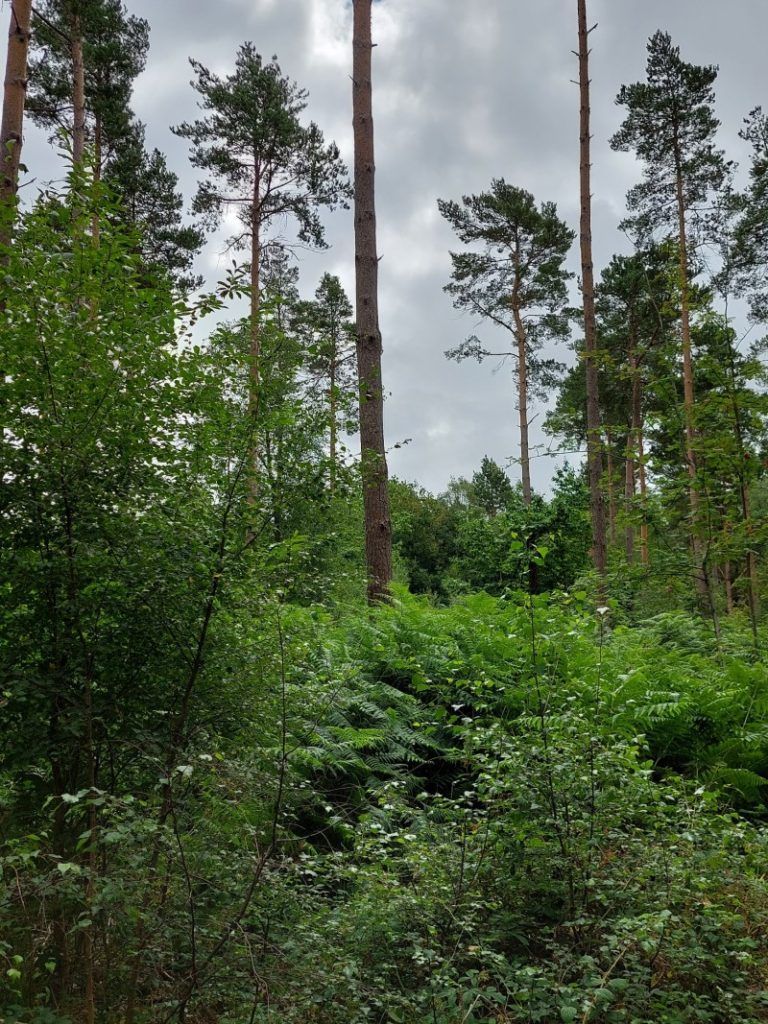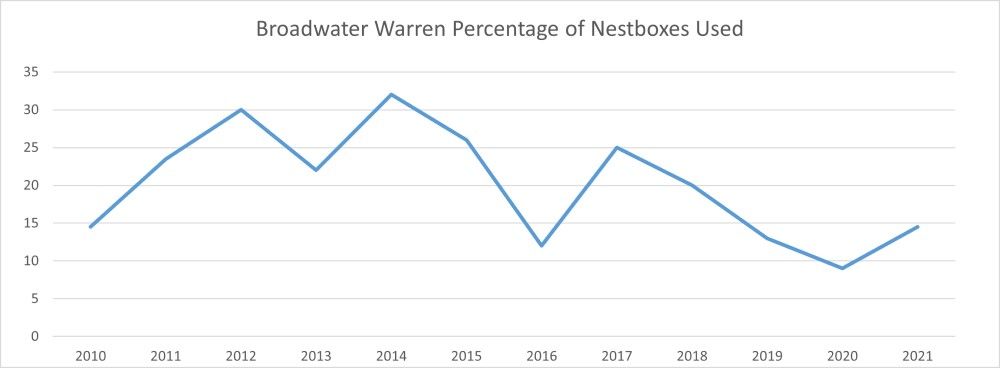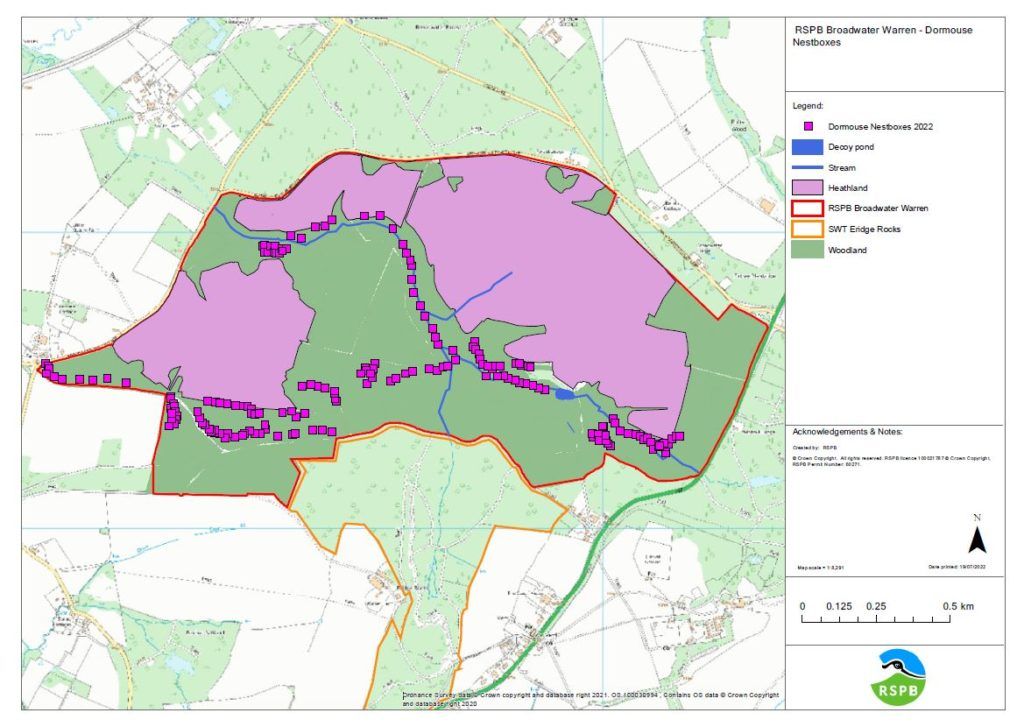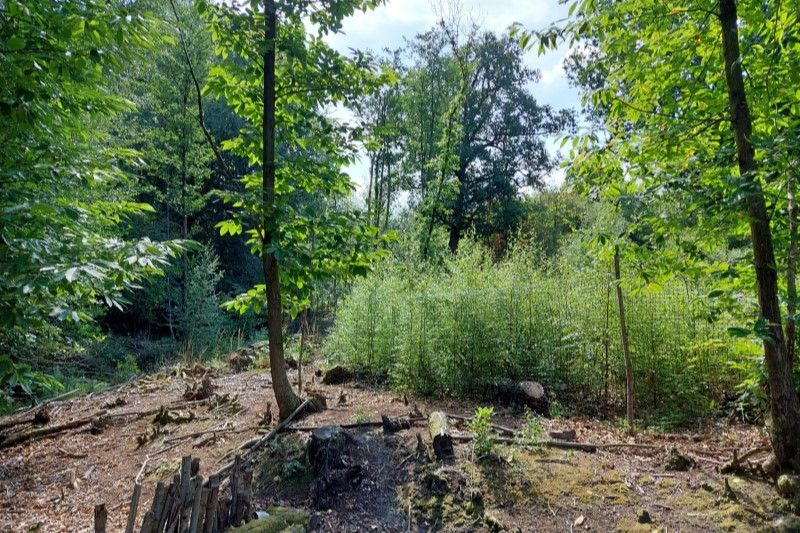Restoring Broadwater Warren
Broadwater Warren – a 180ha nature reserve – was acquired by the RSPB in 2007. It’s a remnant of Waterdown Forest, a medieval hunting forest in the High Weald where, historically, the landscape would have been open heath with pockets of woodland. RSPB’s aim was to restore rare lowland heath and woodland clearing the areas being managed as commercial conifer plantation. Decades of seeding, thinning and cutting decimated the heathland, sparing just a few fragments of woodland. Between 2010 and 2016 the restoration work involved clear-felling 85 hectares of conifer to allow the heathland to regenerate. In the woodland, the remaining conifers were thinned to create a mixed woodland, whilst areas of sweet chestnut and birch were coppiced to encourage re-growth and the development of an understorey.
Installing dormouse nest boxes
One of the first surveys carried out – using nest tubes – showed that dormice were present across the reserve, but in isolated populations. Nest boxes were put up in 2010, the first year habitat restoration work began. Roger Trout of Rabbitwise-Plus advised us where to put the nest boxes and where to carry out the woodland restoration work to maximise benefit for the dormice. Roger envisaged creating a dormouse metapopulation through habitat work that would lead to the isolated populations becoming connected. Almost 180 boxes were put up across the reserve linking areas where dormice were first identified. Some of the boxes were put in unsuitable habitat so we could monitor whether our habitat improvements encouraged dormice to move in. It will be several years before some of the areas become suitable, but there has already been success in two areas, where thinning of mature conifers has changed the habitat and we’ve found dormice using the boxes.

A gradual decline in dormouse evidence
However, dormice have disappeared from parts of the reserve where they were recorded at the beginning of the monitoring programme. On the eastern side, where we’ve noticed extensive deer browsing of coppiced sweet chestnut and birch, we no longer find evidence of dormice. The impact of the browsing is stark as can be seen in the images below where temporary deer fencing, erected in 2020, has enabled the regrowth to flourish, compared with the heavily browsed area around it.
It isn’t practical or feasible to fence larger areas of the woodland, so culling of fallow deer began at the end of 2021. A deer population count suggested that fallow deers numbers were unsustainably high, so stalking was introduced to reduce their number and to move them around the site and into the wider landscape – where their impact can be better absorbed over a larger area. It’s hoped that these two deer management measures will help restore suitable dormouse habitat in the worst-affected areas, by allowing coppice stools to regrow and an understory to develop.

The monitoring results at Broadwater closely mirror those of the State of Britain’s Dormice 2019 and show a gradual overall decline in the population. Similarly, 2014 was a good year and 2016 particularly bad. Numbers bounced back in 2017, but subsequent years haven’t been good as can be seen from the figure showing the percentage of boxes used.
The footage below shows an annual time-lapse of the nest boxes where dormouse evidence has been recorded. It clearly shows the loss of dormice from the eastern side of the reserve, but also some success with dormice starting to fill gaps as a result of habitat improvement.
Broadwater is far from a typical site for dormice and checking 178 boxes across such a large site is hard work. But there’s a lot of satisfaction to be had from finding a dormouse, or even a nest, especially in those areas which have developed as links between the populations. It’s a real concern that we have witnessed the loss of dormice in parts of the reserve. However, there’s also hope that the habitat improvement efforts of the staff and dedicated volunteers will be rewarded in time and we’ll see dormouse thriving across the reserve.
Written by Alan Loweth, with help from Phil Henderson, Warden for the Weald Reserves, and Andy Daw, Weald and Heaths Sites Manager.


